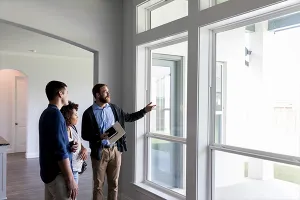
As another high-profile bill, the No Tax on Home Sales Act, is introduced in Congress—joining the bipartisan More Homes on the Market Act—it’s clear that capital gains reform for home sales is surging to the forefront of the housing policy debate. The issue is even on President Trump's radar: In a recent Oval Office exchange, the president said, "We are thinking about no tax on capital gains on houses."
The issue centers on the 28-year-old capital gains threshold. Current law allows individuals to exclude from their taxable income up to $250,000 in gain on the sale of their house. Married couples filing jointly get a $500,000 exclusion.
Those limits, set in 1997, have never been adjusted for inflation, despite a near tripling of the median home price over the period. Failure to adjust the limits disproportionately burdens long-time homeowners and discourages sales, suppressing inventory. That’s because potential sellers, especially long-time homeowners, are opting to stay put rather than risk triggering taxable gains.
The National Association of REALTORS® has led the charge, commissioning research that highlights the strain on homeowners and the housing market at large. And NAR Executive Vice President and Chief Advocacy Officer Shannon McGahn calls this a “a critical juncture” for reform.
“We welcome any serious proposal that addresses the outdated capital gains thresholds hurting American homeowners. This is no longer just a concern for higher-end properties,” McGahn says. “NAR’s research shows nearly 29 million homeowners [34% of current homeowners] already face potential capital gains taxes if they sell, and that number is expected to climb sharply over the next decade.”
By 2030, the figure could rise to 56% and by 2035, NAR estimatespdf that nearly 70% of homeowners could exceed the $250,000 cap. That includes many middle-class Americans who’ve owned and maintained homes over a long period of time and who are depending on the equity they’ve earned to be available in their retirement.
Homeownership is the primary way many middle-class Americans build generational wealth, says NAR Chief Economist Lawrence Yun. Home equity and retirement accounts represent over 60% of households’ net worth, according to the U.S. Census Bureau. In the last decade, Yun says, the typical homeowner has accumulated more than $195,000 in wealth due to price appreciation alone.
The More Homes on the Market Act, introduced by Reps. Jimmy Panetta (D–Calif.) and Mike Kelly (R–Pa.) in February, would double the exclusion limits and index them for future inflation—mirroring bipartisan calls for fairness and economic growth. The No Tax on Home Sales Act, introduced in July by Rep. Marjorie Taylor Greene (R–Ga.), would eliminate federal capital gains tax on the sale of primary residences entirely. Both bills would deliver critical tax relief to homeowners and help to increase housing supply nationwide.
“These potential tax burdens create a ‘lock-in effect,’ especially for seniors,” says McGahn. Owners are discouraged from making needed transitions—and much-needed inventory stays off the market. “That’s why NAR supports efforts like the More Homes on the Market Act and the No Tax on Home Sales Act that are helping move this conversation forward,” she says.
With endorsements on both sides of the aisle, and a nudge from President Trump, the momentum behind capital gains reform for home sales has never been stronger. NAR remains at the forefront, pushing Congress to modernize the policy for today’s housing landscape.
“This isn’t about speculation. It’s about protecting equity and helping the entire market function more efficiently,” McGahn says. “A homeowner shouldn’t be taxed like an investor. President Trump’s comments reflect growing momentum for reform, and we’re encouraged to see this issue gaining attention at the highest levels.”








